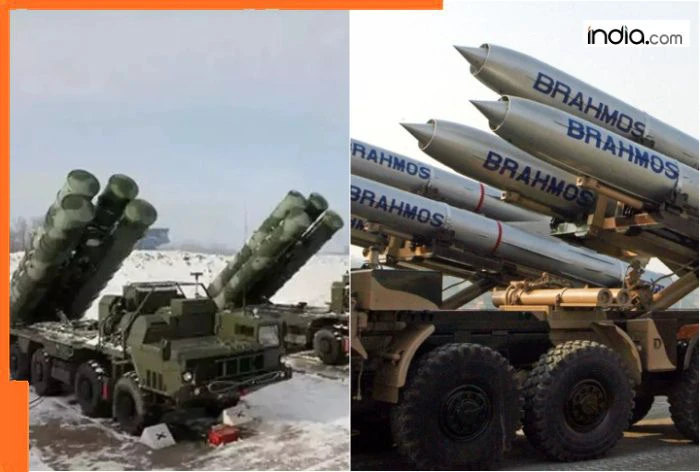Operation Sindoor: India’s lethal superweapons, especially the S-400 Triumf air defense system and BrahMos supersonic cruise missiles, decimated key Pakistani military infrastructure and shot down at least five enemy fighter jets, during Operation Sindoor, Indian Air Force (IAF) chief Air Chief Marshal AP Singh has revealed.
How India’s superweapons devastated Pakistan?
According to the Air Chief, the Russian-made S-400 Triumf air defense system, which has been tailored to India’s needs, attacked strategic military targets deep inside Pakistan and also shot down enemy fighter aircraft. The S-400’s advanced radar and missile guidance technology gave zero reaction time to enemy pilots, he said.
Similarly, India’s homegrown BrahMos supersonic missile, pulverized Pakistani military infrastructure with precise, devastating strikes, sending shivers down the spine of Pakistani military leadership. As per defense sources, BrahMos was used to target Pakistani military command centers from a stand-off position.
“We were able to get at least two command and control centres, like Murid and Chaklala. At least six radars, some of them big, some of them small. Two SAGW systems that is in Lahore and Okara. We attacked three hangars. One was the Sukkur UAV hangar, the Bholari hangar and the Jacobabad F-16 hangar. We have an indication of at least one AEW&C in that AEW&C hangar and a few F-16s, which were under maintenance there,” the IAF chief said during his keynote address at the 16th edition of the Air Chief Marshal LM Katre Memorial Lecture on Saturday.
‘Largest ever recorded surface-to-air kill’
According to Air Chief Marshal Singh, apart from the five Pakistani fighter jets that were shot down during Operation Sindoor, one large aircraft was downed at a distance of about 300 kilometers, which is the “largest ever recorded surface-to-air kill that we can talk about”.
“We have at least five fighters confirmed kills and one large aircraft, which could be either an ELINT (Electronic Intelligence) aircraft or an AEW &C (Airborne Early Warning and Control) aircraft, which was taken on at a distance of about 300 kilometres. This is actually the largest ever recorded surface-to-air kill that we can talk about,” he said.
What about indigenous air defense systems
Meanwhile, DRDO Chairman Samir V Kamat revealed how indigenous Akash missile system and Medium Range Surface to Air Missile (MR-SAM), intercepted Pakistan’s low-altitude fighter formations and neutralized every enemy drone and missile during the India-Pakistan conflict.
Additionally, the D4 Anti-Drone System, developed by DRDO, a key part of India’s multi-layered air defense, also played a critical role during Operation Sindoor as it shot down enemy drones and other aerial threats with deadly accuracy.
‘Political will’ was key
Meanwhile, IAF chief Singh also credited the “political will” of the Central government for the success Operation Sindoor by allowing the Armed Forces to conduct the operations without any constraints.
“A key reason for success was the presence of political will. There was very clear political will and very clear directions given to us. No restrictions were put on us… If there were any constraints, they were self-made. The forces decided what the rules of engagement would be. We decided how we wanted to control the escalation. We had full freedom to plan and execute,” he said.
